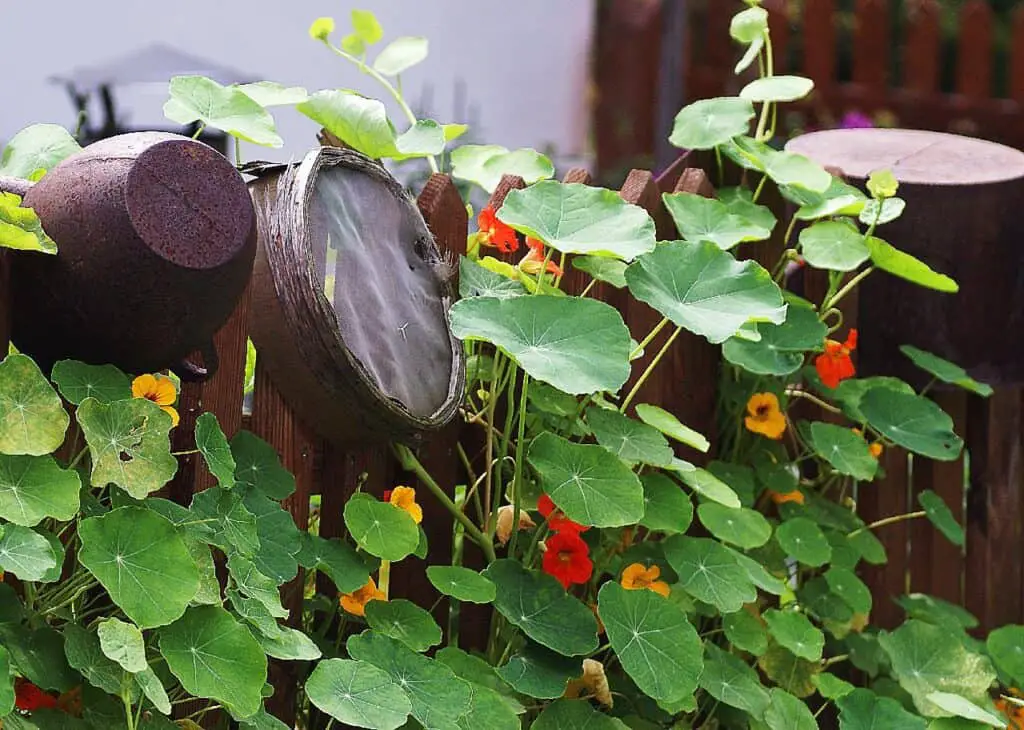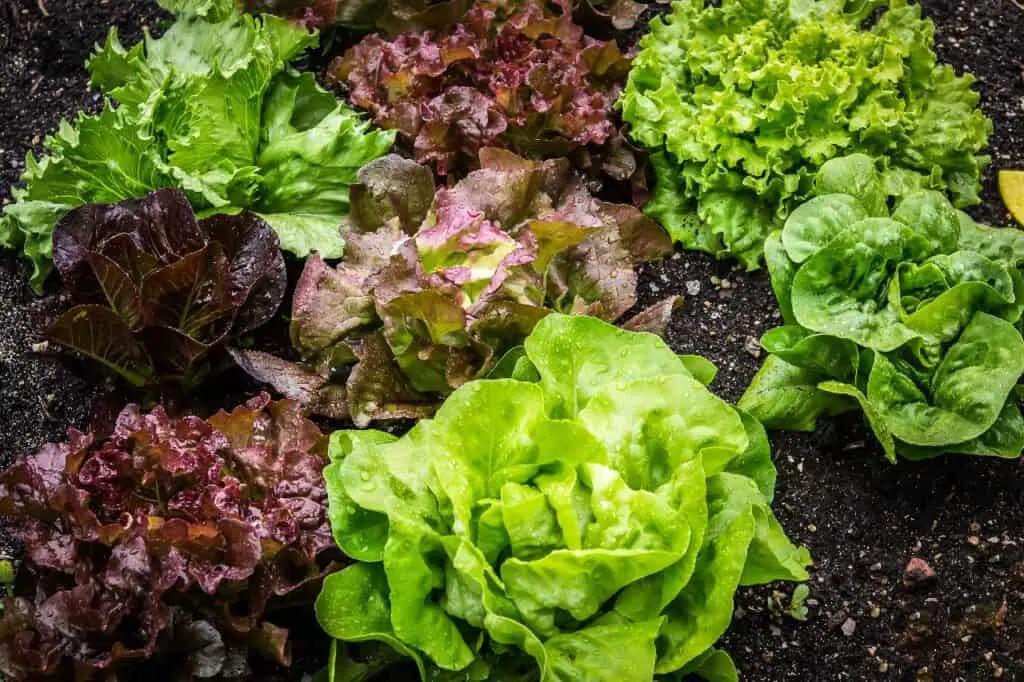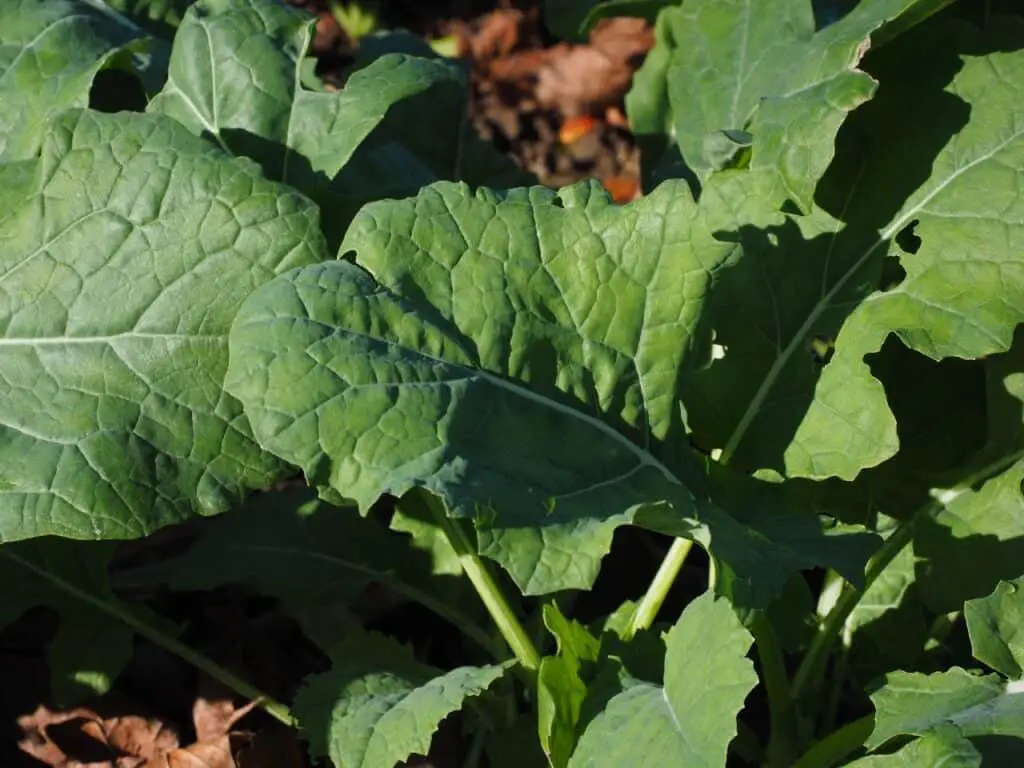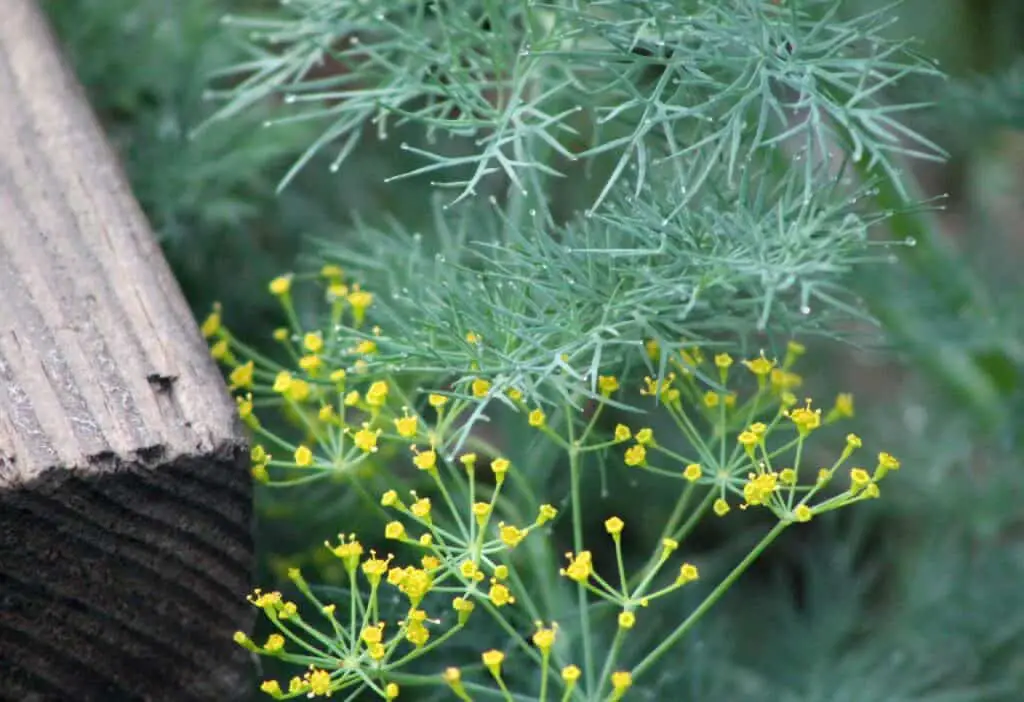Kale provides nutritious greens in winter, at a time when fresh veggies are rare. Its cheerful, curling tops can be chopped, fried, added to casseroles, and even made into winter salads.
Companion planting, next to your Kale plant, will provide shade and deter pests. Read on to learn about 10 of the best companions for Kale and the worst companions you should avoid.
Best Companion Plants for Kale
The following 10 best kale companions will not prevent your Kale to develop and thrive. On the contrary, they will get along together and provide a versatile garden.
1. Dill
Dill is grown for its delicious taste for use in the kitchen but a little known fact is how many beneficial insects it also attracts. Planted next to Kale, you will notice an abundance of hoverflies, which love its flowers.
Hoverfly larvae will then move on from dill, to gobble up the aphids which adore the tasty tops of your Kale plants. The smell is a crucial element for protecting your Kale plants.
2. Nasturtiums

Although it is somewhat of a sacrificial offering to the pests, the nasturtium will help your Kale a lot.
Pests that would normally feed on your Kale will happily live on nasturtiums instead. You can snack on its leaves and flowers raw in salads too, so this is a great companion.
3. Radish

You can harvest the radishes for months, while they also act as a cover plant in the large spaces between your Kale plants. After harvesting the radishes, your Kale happily grows on.
4. Lettuce

Their dense growth also covers the soil between Kale rows so that weeds cannot flourish. A winning combination!
5. Sage

Plant it close to Kale and then use sage to flavor your Kale casseroles.
6. Garlic
Garlic planted alongside Kale will repel insects.
The smell alone is often enough to ward off cabbage moths looking for a place to lay eggs.
Known for its ability to ward off the evil eye, garlic acts as an odorous warning to any pests that they are not welcome.
7. Leeks
Leeks, onions, and spring onions like being next to Kale.
They can be inter-planted between the big gaps left for Kale and they grow beautifully, while their odor is really unpleasant for Kale pests.
Onions and spring onions offer your Kale some pest protection too. The strong smell deters moths and aphids from devouring your young Kale.
8. Sweet Alyssum

The aphids which try to feed on your Kale are then spotted by these same hoverflies, feeding on Sweet Alyssum growing right next door!
Hoverflies enjoy nectar from the flowers, followed by a high-protein aphid lunch. Another benefit for your Kale is that Sweet Alyssum covers large areas. Its growth offers ground cover protection so that weeds cannot take over under your Kale plants.
9. Marigolds
Marigolds are so cheerful they deserve a place in any garden. However, the important aspect for Kale is that hoverflies also adore marigolds. You may not know but hoverfly larvae feed on aphids that love to gather on your Kale.
Marigolds are yet another flower that attracts hoverflies, which really want to eat your Kale pests. A winning companion planting!
10. Green manures

These are crops that gardeners plant every 3-4 years to improve the fertility of the soil and then the whole plant is dug up and turned over to add all that goodness to the soil as it decays.
As they are planted in spring and summer, they grow at a time when your Kale plant is growing slowly so they do not affect its growth. Kale plants need a lot of space around each individual plant and weeds.
Clover is yet another green manure option that conveniently fixes nitrogen in the summer for use by your Kale plant later in the cold winter months.
Buckwheat is another green manure possibility that also helps to retain water in the soil and stops weeds from developing.
After your green manure has grown, just dig them back into the soil and all the goodness is retained as nutrients. Read on to discover what is not a good Kale companion.
Plants that don’t get along with Kale
The next few plants aren’t good companions for Kale plants because they might disrupt their growth.
1. Cabbage
The worst companion plants for Kale are other members of the cabbage (Brassica) family.
Although they all love the same type of soil and it might be convenient to try them all in one patch, the reason to keep them apart from each other is that you can stop the spread of disease.
These plants all have a really long growing season and they love to grow after beans, which fixes a lot of nitrogen in the soil.
If you plant Kale with members of its own family, pests from one can transfer easily. Diseases such as clubroot are very common in plants of this family and will easily transfer to any close plant.
Do not plant them all close together. If one is diseased, it is contained to that one plant and does not spread so easily to all your healthy plants.
So don’t plant Kale with Brussels sprouts, cabbage, cauliflower, or any Brassica plants.
2. Sunflowers
Experienced gardeners do not recommend sunflowers next to Kale. They may be gorgeous but their tall growth will shade your young Kale plants too much.
While they are young, Kale plants need some shade. However, a row of sunflowers would quickly take the lot. So, better to put these beauties somewhere else in direct sunshine which does not impact your Kale.
3. Pole beans
Some gardeners say pole beans grow well with Kale but I disagree.
I would advise planting the beans with manure incorporated. Then, move the Kale from the nursery bed to follow on after the beans have finished.
That way the Kale benefits from the nitrogen fixed by the beans but does not have to compete with the faster-growing beans.
Can you plant Kale and strawberries together?
My advice is most definitely not.
Strawberries stay in the same patch for 3 years or more and they adore direct sunshine and plenty of it! They thrive in rich soil with manure, ash, and compost to nourish them.
They produce runners and try to spread as widely as possible. Your poor Kale plant will simply not be able to compete.
The planting instructions for Kale could not be more different.
You need to give your Kale plant a bit of shade and nice smelling flowers close by, to give some ground cover and to attract beneficial insects.
In an ideal world, Kale plants should not be placed in a bed with manure directly applied.
Can you plant Kale with zucchini?
If space is really tight, then maybe zucchini could give your Kale plant some welcome shade because its leaves are enormous and it is a fast-growing plant. But zucchini adores nitrogen, rich soil, and craves direct sunshine, while your Kale plant is thinking lovingly of cooler air.
Keep in mind that Kale survives frost and super cold temperatures. Therefore, unless space is really tight, I would probably put zucchini in the sunny part of your garden and Kale on the opposite side. The zucchini will probably strip the ground of nutrients too, which your Kale plant will need in winter.
What can you plant with Kale to keep bugs away?
Planting some of the flowers mentioned in this article (Nasturtiums, Sweet Alyssum, etc.) will help by attracting beneficial insects which will move on to feed on the caterpillars and aphids.
Many types of insects can afflict Kale, ranging from cabbage root butterflies to aphids. The strong odor from the onion family will also make your Kale seem less attractive to bugs.
Finally, you can also protect your Kale by using netting in summer, so that butterflies cannot lay eggs on their leaves.
Do tomatoes and kale grow well together?
This is not the best combination.
Tomatoes only grow for a short season in summer whereas Kale grows for a long time in colder months. Both of these plants are hungry feeders, taking nitrogen from the soil.
It is unlikely that you will get your biggest tomatoes or abundant Kale foliage from this pairing. However, if you add comfrey leaves or another nitrogen source, then it may be possible.
Another consideration is soil.
Tomatoes like manure but Kale prefers soil that was manured and used by another crop e.g. beans or peas. Growing Kale after beans is suggested. However, tomatoes will use a lot of the nitrogen needed in winter for your kale.
Can peppers and Kale be planted together?
Traditionally, experienced gardeners advise against this for the same reason as the tomatoes.
The peppers extract nitrogen, leaving little for the Kale.
It all depends on how fertile the soil is.
The peppers will grow vigorously in summer. However, the Kale plants add foliage more in winter. Thus, if the goodness in the ground has been used by your peppers, it is likely to affect your Kale.
Read on to see the best soil for Kale.
Extra tips
If you have comfrey leaves, plant a few leaves per plant directly into the soil when you plant your Kale. The leaves will decompose slowly and release nitrogen, potassium, and other essential nutrients over a prolonged period for use by your Kale.
How long does Kale take from seed to plate?
This plant stays in the ground for almost 12 months from seed to picking.
Plant seeds in late spring, transplant seedlings to a nursery bed, until your bean patch is available in August or September.
In September, weed the bed. Then, dig the plants in deep. Tramp down the soil gently to ensure they do not rock in winter winds. They will continue to grow all winter.
To harvest from late November and December onwards, pick young leaves as the older ones get a bit chewy. Keep picking as this encourages the growth of new leaves.
How can I cook Kale?
Traditionally Kale is cooked like cabbage but this can be a bit tasteless if overcooked.
So chop the leaves, add a dash of olive oil and a sprinkling of black pepper and fry them briefly. Voila! You can have crispy Kale in minutes.
If you have any Brussels sprouts, these can be added to make a really tasty dish. Chop leaves finely to add greens to a winter stew or casserole. Add them in late to retain the vitamins and cook for at least 15 minutes so the leaves are more tender.
You can also boil Kale in water for a few minutes, add some herbs and make a cooked, green salad for winter use.
FAQs
What is the best soil for Kale?
Kale likes deep soil, rich in nitrogen and they need their roots firmly planted to cope with winter winds.
So, a patch where beans or peas grew last year is perfect for your Kale. Beans fix nitrogen so that your Kale can use this in the long growth period through the fall and winter.
Extra tip: Do not use manure directly on soil for Kale. Although they need lots of nitrogen, they like soil that was manured the previous season and used by other crops like beans or peas.




